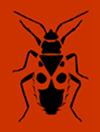Effect of the energy content of diets on the development and quality of the fat reserves of larvae and reproduction of adults of the black soldier fly, Hermetia illucens (Diptera: Stratiomyidae)
IF 1.2
3区 农林科学
Q2 Agricultural and Biological Sciences
引用次数: 5
Abstract
Hermetia illucens is a sustainable and an increasingly bioeconomical source of nutrients for farm animals. It is still necessary, however, to improve our knowledge of the biological features of this species in order to maximize its use. The aims of this research were to evaluate the effect of the energy level of rearing diets on its body weight and fat-body reserves. The quantity and quality of the fats storred by the non-feeding stages of this insect and its reproductive performances were also studied. A control diet (CD - Gainesville diet) and three diets with progressively greater energy contents (kcal/kg ME) were formulated. The increase was achieved by including different amounts of maize, 40% (ED1), 60% (ED2) and 80% (ED3), in these three diets. Abother diet (ED4) consisted of fruit and vegetable waste. The results indicate that the body weight of larvae, prepupae, pupae and adult flies, as well as fat content of the larvae increased significantly (p ˂ 0.01) with increase in the energy content of the diets. There was a positive Pearson correlation between energy content of diets and body weight of adult flies. The heaviest egg clutches with the highest number of eggs/clutch (p ˂ 0.01) were laid by flies reared on the diets with the highest energy content. The quality of the fat stored by larvae did not influence the weight and number of egg laid.日粮能量含量对黑兵蝇幼虫发育、脂肪储备质量及成虫繁殖的影响
发光海梅是一种可持续的、越来越具有生物经济意义的农场动物营养来源。然而,仍然有必要提高我们对该物种生物学特征的了解,以最大限度地利用它。本研究的目的是评估饲养日粮的能量水平对其体重和脂肪体储备的影响。研究了该虫非取食期贮存脂肪的数量、质量及其繁殖性能。对照日粮(CD-Gainesville日粮)和三种能量含量逐渐增加(kcal/kg ME)的日粮。通过在这三种日粮中加入不同量的玉米,即40%(ED1)、60%(ED2)和80%(ED3),实现了增加。日粮(ED4)由水果和蔬菜垃圾组成。结果表明,随着日粮能量含量的增加,幼虫、蛹和成虫的体重以及幼虫的脂肪含量均显著增加(p<0.01)。日粮能量含量与成虫体重呈正相关。在能量含量最高的日粮中饲养的苍蝇产下了最重的蛋窝,蛋数/窝数最高(p 0.01)。幼虫储存的脂肪的质量不影响产卵的重量和数量。
本文章由计算机程序翻译,如有差异,请以英文原文为准。
求助全文
约1分钟内获得全文
求助全文
来源期刊
CiteScore
2.30
自引率
7.70%
发文量
43
审稿时长
6-12 weeks
期刊介绍:
EJE publishes original articles, reviews and points of view on all aspects of entomology. There are no restrictions on geographic region or taxon (Myriapoda, Chelicerata and terrestrial Crustacea included). Comprehensive studies and comparative/experimental approaches are preferred and the following types of manuscripts will usually be declined:
- Descriptive alpha-taxonomic studies unless the paper is markedly comprehensive/revisional taxonomically or regionally, and/or significantly improves our knowledge of comparative morphology, relationships or biogeography of the higher taxon concerned;
- Other purely or predominantly descriptive or enumerative papers [such as (ultra)structural and functional details, life tables, host records, distributional records and faunistic surveys, compiled checklists, etc.] unless they are exceptionally comprehensive or concern data or taxa of particular entomological (e.g., phylogenetic) interest;
- Papers evaluating the effect of chemicals (including pesticides, plant extracts, attractants or repellents, etc.), irradiation, pathogens, or dealing with other data of predominantly agro-economic impact without general entomological relevance.

 求助内容:
求助内容: 应助结果提醒方式:
应助结果提醒方式:


